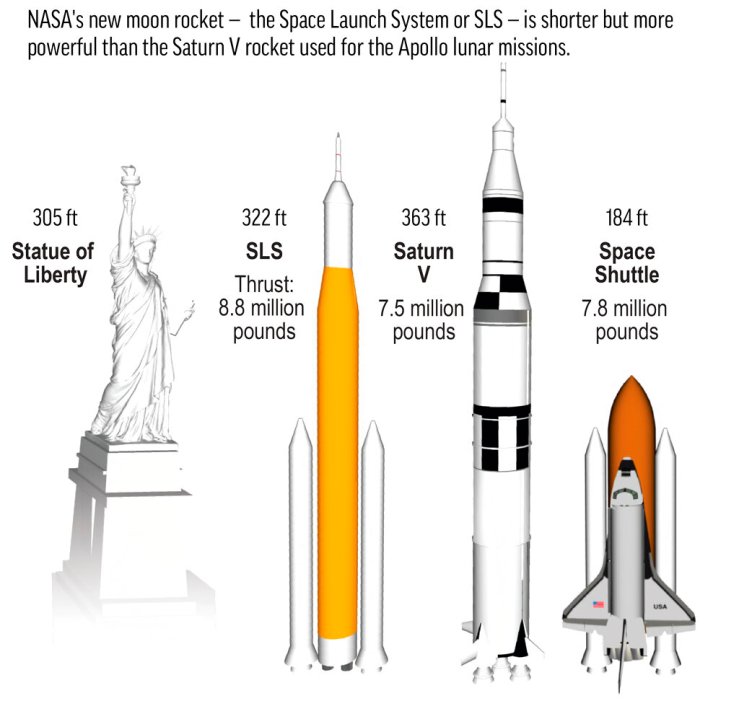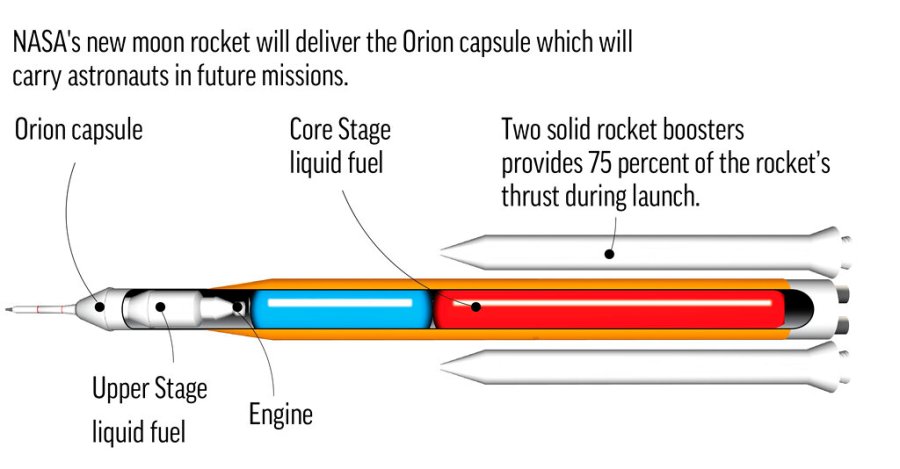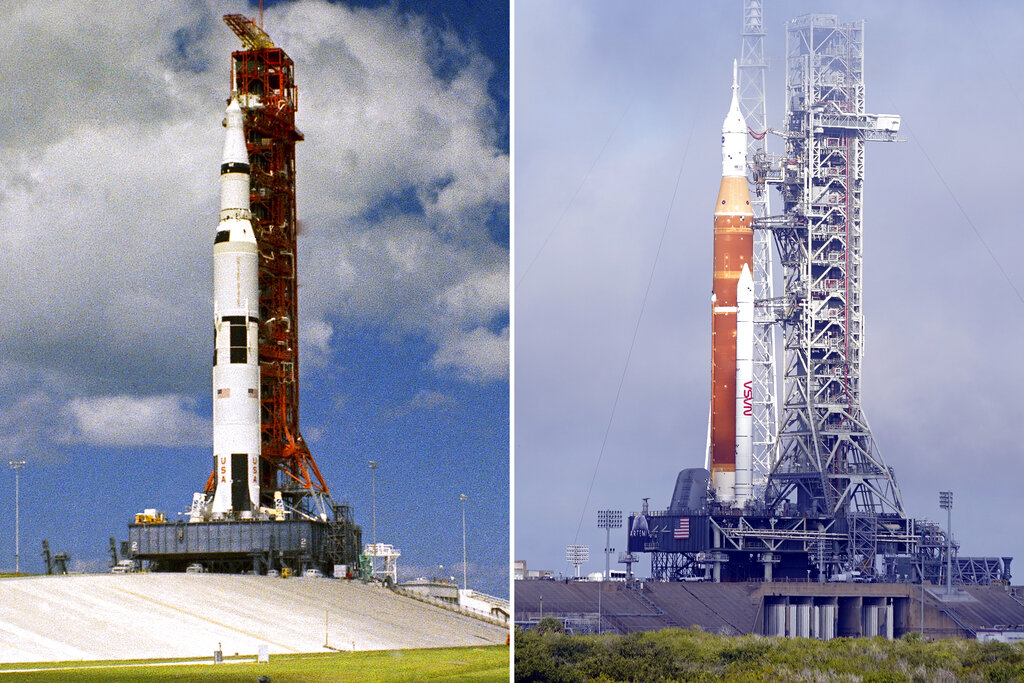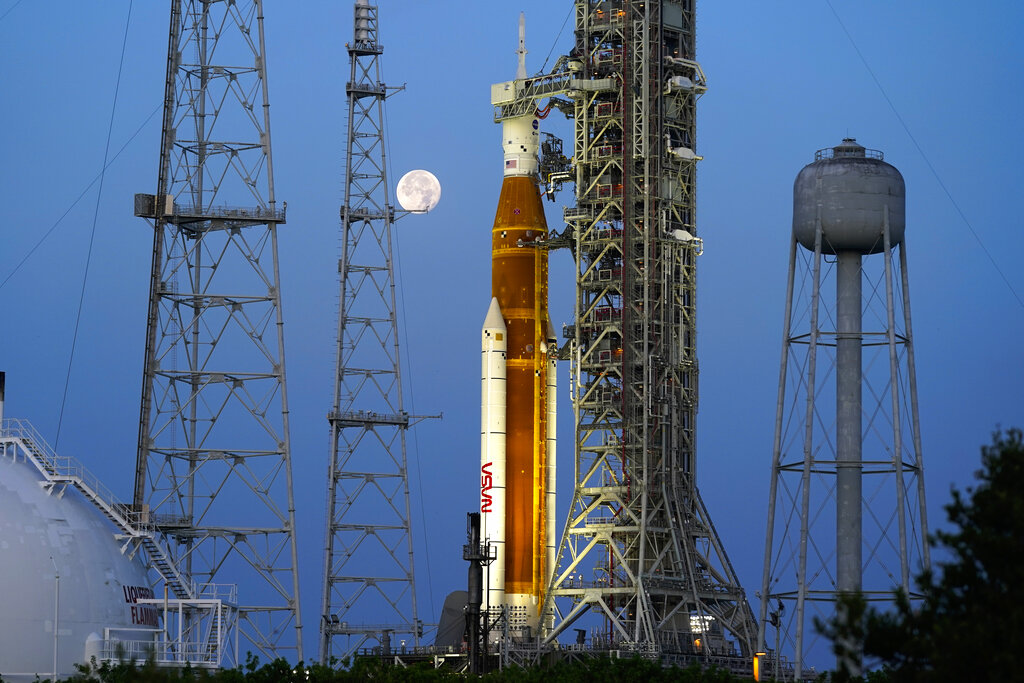(NewsNation) — NASA’s new moon rocket, the Artemis 1, remained on track to blast off on a crucial test flight Monday, despite a series of lightning strikes at the launch pad.
Five strikes were confirmed, hitting the 600-foot lightning-protection towers surrounding the rocket at NASA’s Kennedy Space Center. The strikes weren’t strong enough to warrant major retesting.
Officials said Sunday that neither the rocket nor capsule suffered any damage during Saturday’s thunderstorm; ground equipment also was unaffected.
“Clearly, the system worked as designed,” said Jeff Spaulding, NASA’s senior test director.
On Monday, the Artemis 1, a 322-foot rocket, will attempt to send an empty crew capsule into a far-flung orbit.
This is the first time in 50 years that NASA has taken a journey to the moon.
NASA officials said Saturday that the team feels good about embarking on the historic attempt to send the Artemis 1 rocket to the moon.
Artemis 1 mission manager Mike Sarafin acknowledged at a news conference that the rocket could lift off within its two-hour launch window, which begins at 8:33 a.m. EDT, or there could be technical or other issues that prevent it from getting off the ground.
However, after polling the mission management team Saturday, Sarafin said “we do feel good about our attempt on Monday in terms of our overall setup.”
“We’re ready to proceed,” he said.
Charlie Blackwell-Thompson, launch director for Exploration Ground Systems, said from a vehicle configuration, the team is “in great shape,” and that all work has been completed.
“Everything is proceeding on schedule,” she said.
Weather on Monday has a 70% chance of being favorable, with a temperature of 82 degrees and wind gusts at 5-10 mph, Melody Lovin, NASA’s weather officer, said.
According to Judd Frieling, ascent and entry flight director, the vehicle’s total weight will be about 5.7 million pounds at lift-off.
At a mission management meeting on Saturday, Sarafin said there were a few late changes associated with the team’s communications coverage plan, so that will be gone over with a “fine-tooth comb” one last time.
“As our zero hour approaches for the Artemis generation, we do have a heightened sense of anticipation and there is definitely excitement amongst the team members,” Sarafin said, adding that the crew is mindful that this is a “purposeful stress test” of the spacecraft.
Priorities for the mission Sarafin outlined at the news conference include testing the vehicle at lunar reentry conditions and demonstrating the vehicle in the flight environment.
According to Frieling, some parts of the mission will involve having secondary payloads on the rocket that will test technology for navigating in deep space, and travel out to encounter an asteroid. Some will focus on the moon by making measurements of it, and mapping where water deposits might be.
This is important for future missions, as it will give scientists an understanding of “where some of these valuable resources are located,” Frieling said.
Should there be any serious issues during Artemis’ mission, lead flight director Rick Labrode said there are different early return trajectories, or “aborts” that could bring the rocket home safely.
“We’ve worked through all these scenarios, we are fully trained on all the various options,” he said.
Astronauts could go for their own lap around the moon as soon as 2024 if everything goes as planned on Monday. It’s NASA’s goal to land two people on the lunar surface by the end of 2025.


The Associated Press contributed to this report.










